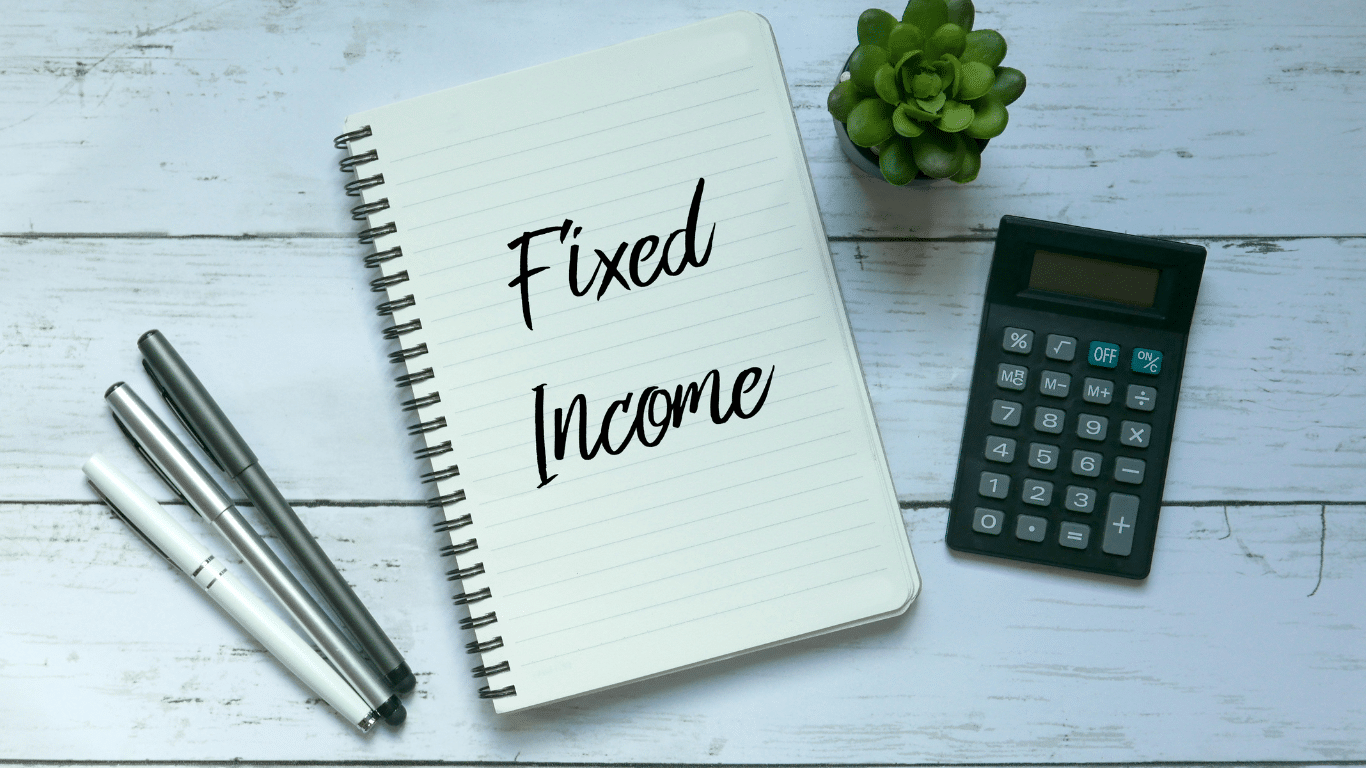Fixed income is a term that is often mentioned in the world of finance, but what does it actually mean? In simple terms, fixed income refers to an investment that provides a regular income stream over a specific period. Unlike equities or stocks, which represent ownership in a company, fixed income investments are essentially loans made by investors to entities such as governments, corporations, or municipalities. These loans are typically in the form of bonds or other debt instruments.
What is fixed income?
Fixed-income investments are loans made by investors to entities such as governments, corporations, or municipalities. In return for lending their money, investors receive regular interest payments, usually semi-annually or annually, and the return on their principal investment at the end of the loan term. This fixed income stream is why these investments are called “fixed income.”
The basics:
Fixed-income investing involves purchasing bonds or other debt instruments that provide a fixed rate of return over a specified period of time. The return is typically in the form of interest payments, paid out at regular intervals. The interest rate on these investments is predetermined and does not change over the life of the investment. This predictability is one of the main attractions of fixed income investing, as it provides investors with a steady income stream and can help to diversify a portfolio.
When investing in fixed income, it’s essential to understand the relationship between the bond’s price and its yield. As interest rates fluctuate, the price of a bond will also fluctuate. If interest rates increase, the prices of bonds will decrease and vice versa. Meaning there is an inverse relationship between bond prices and yields. Bond prices tend to be higher when interest rates are low, and when interest rates are high, bond prices tend to be lower. This is because investors are willing to pay a premium for the bond’s fixed income when interest rates are low.
Benefits of investing in fixed income:

There are several benefits to investing in fixed income. Fixed-income investments provide a regular and stable stream of income, making them particularly attractive for retirees or those seeking a predictable source of income. This income can help to cover living expenses, fund future goals, or be reinvested to grow wealth over time.
Secondly, fixed-income investments are generally less risky than stocks or equities. While some level of risk is still involved, particularly with corporate bonds, the risk is usually lower than that associated with equity investments. This is due to bondholders having a stronger claim on a company’s assets in the case of bankruptcy, increasing their chances of recovering some or all of their investment.
Lastly, fixed-income investments can help to diversify a portfolio. By including fixed income investments alongside equities and other assets, investors can reduce the overall risk of their portfolio. This is because fixed income investments tend to have a low correlation with equities, meaning their returns often move in the opposite direction. This can help smooth out a portfolio’s volatility and improve overall returns.
Types of fixed-income investments:
The most prevalent type of fixed income investment is government bonds. These bonds are issued by national governments to fund their operations and are considered the safest type of investment. This is because they are backed by the issuing government’s full faith and credit.
Corporate bonds are another popular type of fixed income investment. Corporations issue these bonds to raise capital for various purposes, such as expansion or acquisitions. The risk associated with corporate bonds can vary significantly depending on the creditworthiness of the issuing company. Higher-risk corporate bonds, also known as high-yield or trash bonds, offer higher interest rates to compensate investors for the additional risk.
The state and government issue municipal bonds to fund public projects such as schools, hospitals, and infrastructure. These bonds are normally tax-free at the federal level and may also be tax-free at the state and local levels, making them appealing to investors in higher tax rates.
In addition to these traditional fixed-income investments, there are other types of fixed-income securities, such as mortgage-backed and asset-backed securities. Pools of mortgages or other assets back these securities and can offer higher yields than government or corporate bonds but also come with additional risks.
Investment strategies:
When investing in fixed income, there are several strategies that investors can employ to meet their financial goals. One common strategy is creating a laddered bond portfolio with staggered maturities. This allows investors to potentially benefit from rising interest rates by reinvesting the proceeds from maturing bonds into new bonds with higher yields.
Another common strategy is investing in bond funds, which pool investors’ money to purchase a diversified portfolio of bonds. Bond funds can offer professional management and efficiently gain exposure to a wide range of fixed income investments. However, it’s essential to carefully consider the fees and expenses associated with bond funds, as these can eat into returns.
Some investors may also choose to invest in individual bonds directly or through a broker or financial advisor. This allows for greater control over the specific bonds held in the portfolio and can provide more customization to meet individual investment objectives.
What are the risks?
While fixed income investments are generally considered less risky than equities, there are still risks associated with investing in fixed income. One of the main risks is interest rate risk. As we mentioned earlier, bond prices have an inverse relationship with interest rates. If interest rates rise, selling existing bonds before maturity can result in a loss of principal due to the fall in price.
Credit risk is another important consideration when investing in fixed income. This refers to the risk that the bond issuer will default on their payments. Higher-risk bonds, such as those issued by companies with lower credit ratings, are likely to default and offer higher yields to compensate investors for the increased risk.
Inflation risk is also a concern for fixed income investors. Inflation reduces the purchasing power of fixed income transfers over time, implying that the real value of the income received may decrease. While inflation risk can be mitigated to some extent by investing in inflation-protected securities or by including other assets in a portfolio that can benefit from inflation, it is still an important consideration.
How to choose fixed income investments?
Choosing the right fixed income investments for your portfolio requires careful consideration of several factors. One of the first factors to consider is your investment goals and time horizon. If you have a short-term investment horizon, you may want to focus on bonds with shorter maturities, as these are less prone to changes in interest rates. If you have a longer time horizon, you may be able to tolerate more volatility and invest in bonds with longer maturities or higher yields.
Another important factor to consider is the creditworthiness of the issuer. Higher-quality bonds, such as those issued by governments or highly-rated corporations, generally offer lower yields but also lower risk. Lower-quality bonds, on the other hand, offer higher yields but also come with increased default risk.
It’s also important to consider the current interest rate environment when choosing fixed-income investments. If interest rates are expected to rise, investing in bonds with shorter maturities may be more attractive, as they will be less sensitive to changes in interest rates. Conversely, investing in longer-term bonds may offer higher yields if interest rates are expected to fall.

*Diversification and asset allocation are also important considerations when choosing fixed income investments. By spreading your investments across different types of fixed-income securities and different issuers, you can help reduce the risk of any investment impacting your overall portfolio. Similarly, allocating a portion of your portfolio to fixed-income investments can help to balance the risk and potential returns of your overall investment strategy.
Tips for successful investing:
Successful fixed income investing requires careful planning and a disciplined approach. Here are some tips to help you make the most of your fixed income investments:
- Set clear investment goals: Defining your investment goals is important before investing in fixed income. Are you investing for income, capital preservation, or a combination? Understanding your objectives can allow you to make more informed judgements regarding the types of fixed income investments that are best for you.
- Diversify your portfolio: Diversification is essential for risk management in any financial portfolio. You can aim to lower the impact of any single investment on your overall portfolio by diversifying your assets among different types of fixed income instruments and issuers.
- Stay informed: Keep up with the latest economic and market trends that may influence fixed income investments. This includes monitoring interest rates, credit ratings, and economic indicators that can affect the performance of fixed income securities.
- Consider professional advice: If you’re unsure about investing in fixed income, consider seeking advice from a financial advisor or investment professional. They can help you navigate the complexities of fixed income investing and develop a strategy that aligns with your financial goals.

5. Review and adjust your portfolio: Regularly review your fixed income investments to ensure they align with your investment goals. As market conditions change, you may need to adjust your portfolio to exploit new opportunities or mitigate risks.
Conclusion: Understanding the power of fixed income:
In conclusion, these investments can be valuable to any investment portfolio. They provide a steady income stream, can help diversify a portfolio, and offer potentially lower risk compared to equities. However, it’s important to carefully consider the risks associated with fixed income investing, such as interest rate and credit risk, and choose investments that align with your goals and risk tolerance.
Investors who understand the fundamentals of fixed income can make informed judgements about their investment plan and perhaps profit from the income and stability that these investments bring. Whether investing for income, capital preservation, or a combination of both, fixed income investments can be a fundamental tool for achieving your financial goals. So take the time to explore the fixed income world and discover how it can contribute to your investment success.

